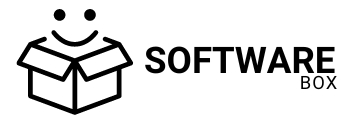In digital development, the quest for a unified and efficient framework for building both web and mobile applications has been akin to the search for the Holy Grail. Enter Flutter, Google’s open-source UI software development kit, which has rapidly gained popularity among developers for its ability to deliver high-quality, natively compiled applications for mobile, web, and desktop from a single codebase. Today, we’re diving deep into the world of Flutter Web Development, exploring how this powerful toolkit is revolutionizing the way developers approach building seamless web and mobile apps.
Flutter: A Brief Overview
Before we delve into the specifics of Flutter Web Development, let’s take a moment to understand what makes Flutter stand out. Initially launched by Google in 2017, Flutter was designed with the goal of solving the dilemma of developing for multiple platforms simultaneously. It uses the Dart programming language, which is optimized for fast apps on any platform. Flutter’s unique approach to rendering components, or “widgets,” allows for highly customizable and incredibly fast applications. This has made it a favorite among developers looking to push the boundaries of what’s possible in app design.
The Rise of Flutter Web Development
While Flutter was initially focused on mobile app development, the introduction of Flutter for web has opened up new avenues for creating versatile applications that run seamlessly across devices. Flutter Web Development leverages the same principles that made it a game-changer for mobile apps, bringing them into the web domain. This means developers can now build applications that are not only visually stunning and highly interactive but also maintain consistency across mobile and web platforms.
The Advantages of Flutter Web Development
1. Unified Codebase
One of the most significant benefits of Flutter Web Development is the ability to maintain a single codebase for both web and mobile applications. This dramatically reduces development time and resources, as developers no longer need to write separate code for different platforms.
2. Rich, Customizable UI
Flutter’s widget-based architecture allows for the creation of highly customizable and responsive designs. This level of control over the app’s appearance and feel is a game-changer for creating unique user experiences that stand out in the crowded digital space.
3. Performance
Flutter’s ability to compile directly to native code means that web applications built with Flutter are incredibly fast and responsive. This is crucial for maintaining user engagement and ensuring a smooth, seamless experience across devices.
4. Hot Reload
Flutter’s hot reload feature is a boon for developers, allowing them to see the effects of their changes in real-time without restarting the application. This speeds up the development process and makes experimenting with designs and features a breeze.
5. Vibrant Community and Support
Being an open-source project, Flutter has a vibrant community of developers and contributors who are constantly improving the framework and offering support. This community-driven approach ensures that Flutter remains at the cutting edge of web and mobile development technologies.
Flutter Web Development in Action
To truly appreciate the potential of Flutter Web Development, let’s consider a practical example. Imagine you’re developing a platform that requires a mobile app for on-the-go access and a web application for more detailed interactions. Traditionally, this would require developing two separate applications, doubling the workload and potential for inconsistencies. With Flutter, you can develop both applications simultaneously, ensuring feature parity and a unified user experience. This not only saves time and resources but also enhances the overall quality of the product.
Embracing Flutter for Your Next Project
As we’ve seen, Flutter Web Development offers a compelling solution for building high-quality, seamless web and mobile applications. Whether you’re a seasoned developer or just starting, Flutter provides the tools and community support needed to bring your ideas to life. By embracing Flutter, you’re not just choosing a development framework; you’re joining a movement towards more efficient, unified, and user-centric app development.
In conclusion, the potential of Flutter Web Development is vast and largely untapped. As more developers and companies realize its benefits, we can expect to see a new wave of innovative, cross-platform applications that blur the lines between web and mobile experiences. If you’re looking to stay ahead of the curve in app development, it’s time to dive into Flutter and unlock its full potential for your next project.

